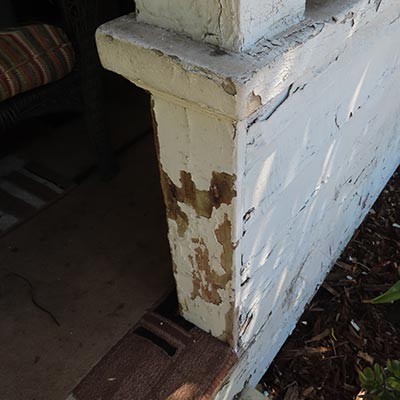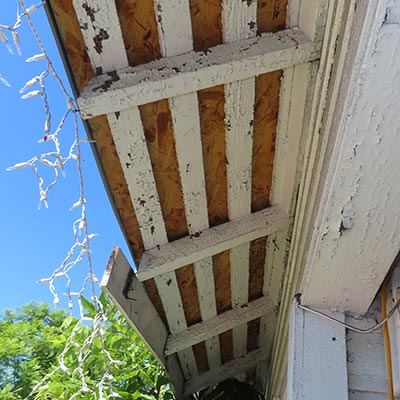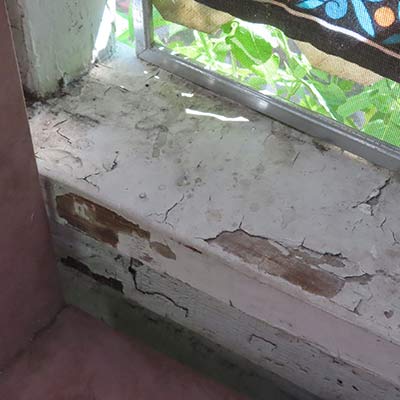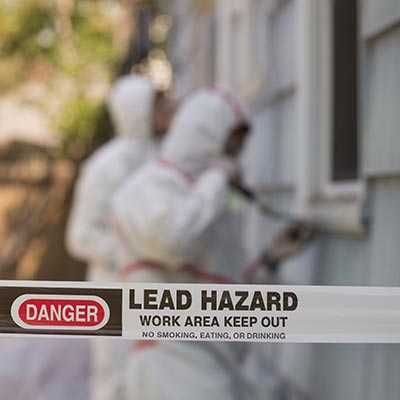Child Lead-Poisoning From Deteriorated Lead-Based Paint Hazards in the Home
In 1978, the federal government banned lead from residential paint. Homes built before 1978 however still contain lead-based paint. Children between the ages of 6 months and 3 years old are especially at risk from the severe harm that can occur from deteriorating lead-based paint in homes built before 1978. When landlords and managers of these older properties allow newer layers of paint to deteriorate, the chipping, peeling and cracking in these newer layers of paint exposes the older layers of lead-based paint. Exposed lead-based paint produces lead contaminated dust and creates lead paint chips that are accessible to a young child. Lead dust is also created by the failure to properly maintain friction surfaces such as doors or windows. The constant use of doors or windows with older layers of lead-based paint causes deterioration that generates lead dust.
Children are Especially at Risk
Young children typically get exposed to lead contaminated dust and lead paint chips as toddlers while crawling on floors and standing near old window sills. The lead dust is then ingested by these children through hand-to-mouth activity that is normal for a young child.
As a precautionary measure that can decrease exposure to lead dust, parents with young children in older homes with deteriorated paint should frequently wet wipe floors and surfaces accessible to the young child.
Other sources of childhood lead exposure can occur from lead in imported candy, pottery, toys, home remedies, jewelry and other utensils. Parents working in certain industries such as automobile shops, construction and welding should be careful not to bring clothes from their workplace into a home with young children.
As a precautionary measure, parents should take their young children to their pediatrician for blood testing at 12 months and 24 months of age to screen for lead poisoning.
Impacts on Brain Development
The U.S. Centers for Disease Control and Prevention and the American Academy of Pediatrics are clear that there is no safe blood lead level for a child. Lead poisoning has been shown to cause significant neurological injuries to the developing brain of a child or fetus. Children with blood lead levels (BLL) even below 5 micrograms per deciliter have been found to suffer serious neurological harm. Neurological impacts from child lead poisoning can include loss of IQ points, attention deficit hyperactivity disorder (ADHD), speech and language delays, impulsivity, behavioral problems, aggression, poor muscle coordination, decreased muscle and bone growth and hearing damage.
Health Risks to Adults
Adults can also suffer from lead poisoning. Brain-related injuries in adults include dizziness, fatigue, irritability, problems with concentrating, weakness, malaise, decreased libido and impotence. At higher levels lead poisoning in adults can result in significant impacts on the kidneys, heart, reproductive and endocrine system.
Adults are typically exposed to lead either through the workplace or while living through repairs and/or renovations at their home. Adults (and children) can be exposed to substantial amounts of lead through breathing in lead-contaminated dust that can occur in the workplace and/or the renovated home. Home repairs of older dwellings (built before 1978) must be undertaken in a way that contains the lead-based paint that is present.
Resources
- U.S. Environmental Protection Agency pamphlet “Protect Your Family From Lead in Your Home”
- U.S. Environmental Protection Agency pamphlet “Renovate Right”
Contact Us
All Practice Areas
- Unsafe and Unhealthy Housing
- Child Lead Poisoning
- Carbon Monoxide Exposure
- Fraudulent and Illegal Evictions
- Traumatic Premises Injuries
Call For A Free Consultation
(323) 648-6602
To receive your free case evaluation, call (323) 648-6602 or complete the form on this page and Philip Shakhnis will respond to you personally within 24 hours.





